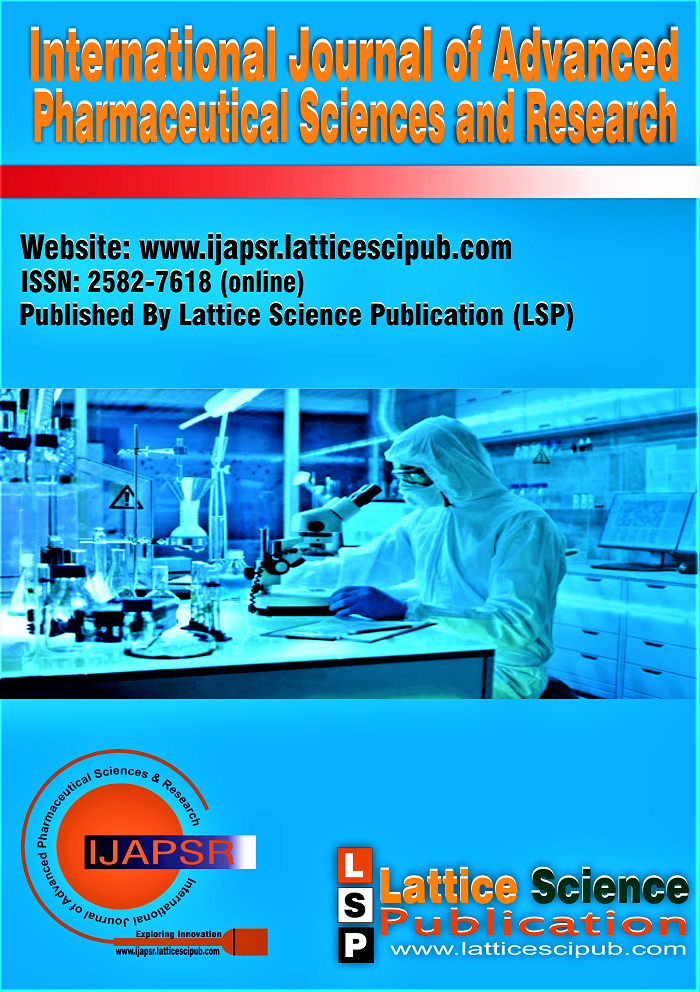Treatment Analysis for Alzheimer’s Disease using Caenorhabditis Elegans as a Model
Main Article Content
Abstract
Alzheimer's Disease, a progressive neurodegenerative condition lacking a definitive and guaranteed treatment, prompts critical investigation for effective remedies to manage its behavioral and cognitive impact. Herbal extracts like Ginkgo Biloba, Lion's Mane, Basil, and Sage present potential options to alleviate plaque build-up caused by Alzheimer's. This study aims to identify the most efficacious herbal extract for treating Alzheimer's, using aged Caenorhabditis elegans (C. elegans) as a model organism. The hypothesis states that treated C. elegans will exhibit increased behavioral movement and altered molecular effects compared to the untreated C. elegans. The Independent Variable consists of the various extracts fed to the C. elegans. The Dependent Variables consist of the C. elegan's behavioral abilities (speed, responsiveness, foraging) and C. elegan’s molecular effects measured by protein concentration. The Control Variable is the untreated aged C. elegan’s behavioral movement and molecular effects. Data was collected using WormLab and molecular assays to validate and determine the treatment's effectiveness. Through ANOVA testing, statistically significant differences emerged in four out of five measured tests, rejecting the null hypothesis more often than accepting it. Results from data indicate Ginkgo Biloba extract as the best extract, due to displaying increased speed, responsiveness, and foraging ability in C.elegans compared to other extracts and untreated C. elegans.This suggests Ginkgo Biloba as a highly possible treatment option.
Downloads
Article Details

This work is licensed under a Creative Commons Attribution-NonCommercial-NoDerivatives 4.0 International License.
How to Cite
References
Scott, K. R., & Barrett, A. M. (2007). Dementia syndromes: evaluation and treatment. Expert Review of Neurotherapeutics, 7(4), 407–422. https://doi.org/10.1586/14737175.7.4.407
Jung, D., Lee, K., De Gagne, J. C., Lee, M., Lee, H., Yoo, L., Won, S., & Choi, E. (2021). Eating Difficulties among Older Adults with Dementia in Long-Term Care Facilities: A Scoping Review. International Journal of Environmental Research and Public Health, 18(19), 10109. https://doi.org/10.3390/ijerph181910109
Yiannopoulou, K. G., Anastasiou, A. I., Zachariou, V., & Pelidou, S. (2019). Reasons for failed trials of Disease-Modifying Treatments for Alzheimer Disease and their contribution in recent research. Biomedicines, 7(4), 97. https://doi.org/10.3390/biomedicines7040097
Karimi, A., Majlesi, M., & Rafieian-Kopaei, M. (2015). Herbal versus synthetic drugs: Beliefs and facts. Journal of Nephropharmacology, 4(1), 27-30.
John, O. O., Amarachi, I. S., Agbo, C. P., Adaeze, E., Kale, M. B., Umare, M. D., & Upaganlawar, A. (2022). Phytotherapy: A promising approach for the treatment of Alzheimer’s disease. Pharmacological Research - Modern Chinese Medicine, 2, 100030. https://doi.org/10.1016/j.prmcm.2021.100030
Xie, L., Zhu, Q., & Lu, J. (2022). Can We Use Ginkgo biloba Extract to Treat Alzheimer’s Disease? Lessons from Preclinical and Clinical Studies. Cells, 11(3), 479. https://doi.org/10.3390/cells11030479
Brandalise, F., Roda, E., Ratto, D., Goppa, L., Gargano, M. L., Cirlincione, F., Priori, E. C., Venuti, M. T., Pastorelli, E., Savino, E., & Rossi, P. (2023). Hericium erinaceus in Neurodegenerative Diseases: From Bench to Bedside and Beyond, How Far from the Shoreline? Journal of Fungi, 9(5), 551. https://doi.org/10.3390/jof9050551
Szućko-Kociuba, I., Trzeciak-Ryczek, A., Kupnicka, P., & Chlubek, D. (2023). Neurotrophic and Neuroprotective Effects of Hericium erinaceus. International Journal of Molecular Sciences, 24(21), 15960. https://doi.org/10.3390/ijms242115960
Heshami, N., Mohammadali, S., Komaki, A., Tayebinia, H., Karimi, J., Oshaghi, E. A., Hashemnia, M., & Khodadadi, I. (2021). Favorable effects of dill tablets and Ocimum basilicum L. extract on learning, memory, and hippocampal fatty acid composition in hypercholesterolemic rats. DOAJ (DOAJ: Directory of Open Access Journals), 24(3), 300–311. https://doi.org/10.22038/ijbms.2021.49013.11230
Gregory, J., Vengalasetti, Y. V., Bredesen, D. E., & Rao, R. V. (2021). Neuroprotective herbs for the management of Alzheimer’s disease. Biomolecules, 11(4), 543. https://doi.org/10.3390/biom11040543
Alvarez, J., Álvarez-Illera, P., Santo‐Domingo, J., Fonteríz, R. I., & Montero, M. (2022). Modeling Alzheimer’s Disease in Caenorhabditis elegans. Biomedicines, 10(2), 288. https://doi.org/10.3390/biomedicines10020288
Zhang, S., Li, F., Zhou, T., Wang, G., & Li, Z. (2020). Caenorhabditis elegans as a Useful Model for Studying Aging Mutations. Frontiers in Endocrinology, 11. https://doi.org/10.3389/fendo.2020.554994
Lai, C., Chou, C., Ch’ang, L., Liu, C., & Lin, W. (2000). Identification of Novel Human Genes Evolutionarily Conserved in Caenorhabditis elegans by Comparative Proteomics. Genome Research, 10(5), 703–713. https://doi.org/10.1101/gr.10.5.703f
Henricson, A., Sonnhammer, E. L., Baillie, D. L., & Gomes, A. V. (2004). Functional characterization in Caenorhabditis elegans of transmembrane worm-human orthologs. BMC Genomics, 5(1). https://doi.org/10.1186/1471-2164-5-85
Pincus, Z., Mazer, T., & Slack, F. J. (2016). Autofluorescence as a measure of senescence in C. elegans: look to red, not blue or green. Aging, 8(5), 889–898. https://doi.org/10.18632/aging.100936
V P, S., S, S., & George, Prof. J. (2021). Alzheimer s Disease Classification and Detection using MRI Dataset. In International Journal of Innovative Technology and Exploring Engineering (Vol. 10, Issue 5, pp. 70–72). https://doi.org/10.35940/ijitee.e8662.0310521
Salehi, A. W., Baglat, P., & Gupta, G. (2020). Alzheimer’s Disease Diagnosis using Deep Learning Techniques. In International Journal of Engineering and Advanced Technology (Vol. 9, Issue 3, pp. 874–880). https://doi.org/10.35940/ijeat.c5345.029320
Kumari, B. A. S., Shetty M, C., H M, L., Jain, M. P., & S, S. (2020). Exploring the methods on early detection of Alzheimer’s disease. In International Journal of Recent Technology and Engineering (IJRTE) (Vol. 9, Issue 1, pp. 1754–1758). https://doi.org/10.35940/ijrte.a2391.059120
Pai, R., & Wadhwa, A. (2022). Artificial Intelligence based Modern Approaches to Diagnose Alzheimer s. In Indian Journal of Artificial Intelligence and Neural Networking (Vol. 2, Issue 2, pp. 1–14). https://doi.org/10.54105/ijainn.b1045.022222





